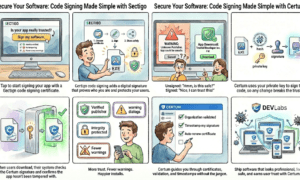The automotive insurance industry is undergoing a transformative shift, driven by technology and consumer demand for personalized solutions. Among the most innovative offerings is pay-per-mile insurance with real-time vehicle tracking, a model that rewards low-mileage drivers with fairer pricing while enhancing safety through data-driven insights.
Understanding Pay-Per-Mile Insurance
Pay-per-mile insurance, also known as usage-based insurance (UBI), is a pricing model where premiums depend on how much a vehicle is driven. Unlike traditional policies that charge flat rates regardless of mileage, this system calculates costs based on actual road usage. For drivers who rarely use their cars—such as remote workers, retirees, or urban dwellers—this can translate to significant savings.
However, pay-per-mile insurance isn’t just about tracking distance. Modern programs integrate real-time vehicle tracking, using telematics devices or smartphone apps to monitor driving habits like speed, braking patterns, and time of day. This data helps insurers assess risk more accurately, tailoring premiums to individual behavior rather than broad demographic assumptions.
How Real-Time Vehicle Tracking Enhances the Model
Real-time tracking technology is the backbone of pay-per-mile insurance. By installing a small telematics device in the car or using a mobile app, insurers collect granular data about driving activity. This includes:
- Miles driven (the core metric for calculating premiums)
- Driving speed (to identify risky behaviors like speeding)
- Braking habits (sudden stops may indicate distracted driving)
- Time of travel (nighttime driving often carries higher risk)
This data is transmitted to insurers in real time, enabling dynamic adjustments to premiums. For example, a driver who avoids rush-hour traffic and maintains steady speeds might qualify for instant discounts. Conversely, those with erratic habits could receive feedback to improve safety.
Benefits of Pay-Per-Mile Insurance with Telematics
The fusion of pay-per-mile pricing and real-time tracking offers compelling advantages for both drivers and insurers. Let’s break down the key benefits:
Cost Savings for Low-Mileage Drivers
Traditional insurance often penalizes safe, low-mileage drivers by grouping them with high-risk profiles. Pay-per-mile plans eliminate this unfairness. If you drive fewer than 5,000 miles annually, you could save 20–40% compared to standard policies. Urban residents who rely on public transport or biking stand to gain the most.
Incentives for Safer Driving
Real-time tracking doesn’t just monitor—it educates. Many insurers provide drivers with personalized feedback via apps, highlighting areas for improvement. Over time, adopting smoother acceleration or reducing nighttime trips can lower premiums further. This creates a win-win: safer roads and cheaper insurance.
Environmental Impact
By discouraging unnecessary driving, pay-per-mile insurance indirectly promotes eco-friendly habits. Fewer miles mean reduced fuel consumption and emissions, aligning with global sustainability goals. Some insurers even partner with carbon-offset programs, offering discounts to environmentally conscious policyholders.
Transparency and Fairness
Gone are the days of opaque pricing. With real-time data, drivers know exactly how their behavior affects costs. This transparency builds trust, as premiums reflect actual risk rather than vague assumptions about age, gender, or ZIP code.
Challenges and Concerns
Despite its promise, pay-per-mile insurance faces hurdles. Privacy remains a top concern, as continuous tracking can feel invasive. Critics argue that insurers might misuse data or expose it to breaches. However, reputable companies encrypt information and allow drivers to opt out of certain tracking features.
Another issue is accessibility. While tech-savvy users embrace telematics, older drivers or those without smartphones may find the system cumbersome. Insurers must balance innovation with inclusive design, offering alternatives like plug-in devices for older vehicles.
Lastly, the model isn’t ideal for everyone. Frequent travelers or long-distance commuters might pay more under pay-per-mile plans. Drivers should compare annual estimates from both traditional and usage-based policies before switching.
Auto Insurance: Trends to Watch
The adoption of pay-per-mile insurance is accelerating, fueled by advancements in AI and 5G connectivity. Here’s what to expect in the coming years:
Integration with Autonomous Vehicles
As self-driving cars become mainstream, insurers will rely even more on real-time data to assess liability and risk. Pay-per-mile models could evolve to charge based on “active driving time” when humans take control.
Dynamic Pricing Algorithms
Machine learning will enable hyper-personalized premiums, adjusting in real time for factors like weather conditions or route safety. Imagine receiving a discount for avoiding a high-crash area during heavy rain!
Expanded Usage-Based Options
Beyond mileage, insurers might incorporate metrics like carbon footprint or vehicle health data. This holistic approach could reward drivers for maintaining their cars or choosing electric vehicles.
Is Pay-Per-Mile Insurance Right for You?
Deciding whether to switch depends on your driving habits and priorities. If you’re a low-mileage driver seeking fairness and savings, this model is worth exploring. Start by:
- Calculating your annual mileage.
- Comparing quotes from pay-per-mile and traditional insurers.
- Reviewing data privacy policies to ensure comfort with tracking.
For tech enthusiasts and eco-conscious drivers, the added benefits of real-time feedback and environmental impact make it an attractive choice.
Conclusion
Pay-per-mile insurance with real-time vehicle tracking represents a seismic shift in how we approach auto coverage. By aligning costs with actual usage and promoting safer habits, it delivers unmatched value for modern drivers. While challenges like privacy and accessibility persist, ongoing technological advancements will likely address these gaps. As the industry evolves, one thing is clear: the future of insurance is personalized, transparent, and data-driven.
Whether you’re a city dweller with a parked car or a safety-conscious parent, this innovative model offers a tailored solution worth considering. Ready to take the wheel? Explore pay-per-mile options today and discover how driving less could save you more.




























